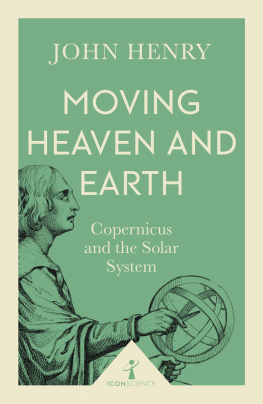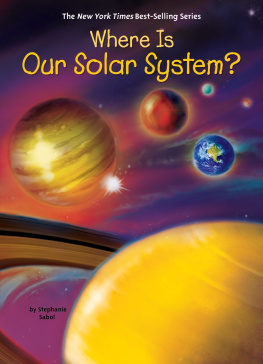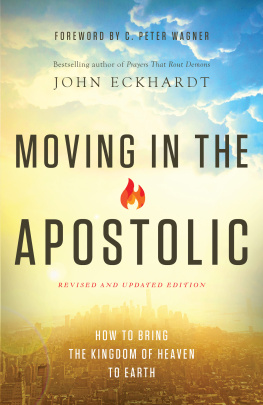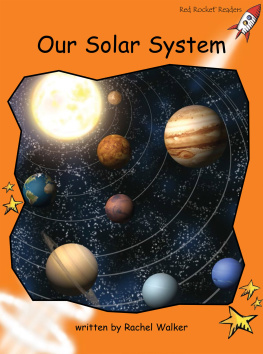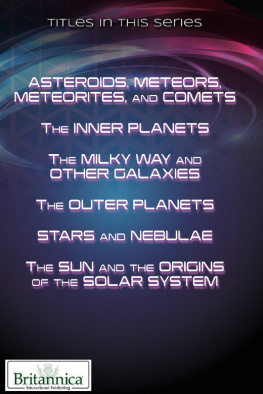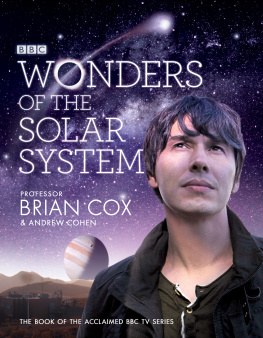John Henry - Moving heaven and earth : Copernicus and the solar system
Here you can read online John Henry - Moving heaven and earth : Copernicus and the solar system full text of the book (entire story) in english for free. Download pdf and epub, get meaning, cover and reviews about this ebook. year: 2017, genre: Religion. Description of the work, (preface) as well as reviews are available. Best literature library LitArk.com created for fans of good reading and offers a wide selection of genres:
Romance novel
Science fiction
Adventure
Detective
Science
History
Home and family
Prose
Art
Politics
Computer
Non-fiction
Religion
Business
Children
Humor
Choose a favorite category and find really read worthwhile books. Enjoy immersion in the world of imagination, feel the emotions of the characters or learn something new for yourself, make an fascinating discovery.
- Book:Moving heaven and earth : Copernicus and the solar system
- Author:
- Genre:
- Year:2017
- Rating:5 / 5
- Favourites:Add to favourites
- Your mark:
- 100
- 1
- 2
- 3
- 4
- 5
Moving heaven and earth : Copernicus and the solar system: summary, description and annotation
We offer to read an annotation, description, summary or preface (depends on what the author of the book "Moving heaven and earth : Copernicus and the solar system" wrote himself). If you haven't found the necessary information about the book — write in the comments, we will try to find it.
John Henry: author's other books
Who wrote Moving heaven and earth : Copernicus and the solar system? Find out the surname, the name of the author of the book and a list of all author's works by series.
Moving heaven and earth : Copernicus and the solar system — read online for free the complete book (whole text) full work
Below is the text of the book, divided by pages. System saving the place of the last page read, allows you to conveniently read the book "Moving heaven and earth : Copernicus and the solar system" online for free, without having to search again every time where you left off. Put a bookmark, and you can go to the page where you finished reading at any time.
Font size:
Interval:
Bookmark:

This edition published in the UK in 2017 by
Icon Books Ltd, Omnibus Business Centre,
3941 North Road, London N7 9DP
email:
www.iconbooks.com
Originally published in 2001 by Icon Books Ltd
Sold in the UK, Europe and Asia by
Faber & Faber Ltd, Bloomsbury House,
7477 Great Russell Street,
London WC1B 3DA or their agents
Distributed in the UK, Europe and Asia by
Grantham Book Services, Trent Road,
Grantham NG31 7XQ
Distributed in the USA by
Publishers Group West,
1700 Fourth Street, Berkeley, CA 94710
Distributed in Canada by
Publishers Group Canada,
76 Stafford Street, Unit 300,
Toronto, Ontario M6J 2S1
Distributed in Australia and New Zealand by
Allen & Unwin Pty Ltd, PO Box 8500,
83 Alexander Street,
Crows Nest, NSW 2065
Distributed in South Africa by
Jonathan Ball, Office B4, The District,
41 Sir Lowry Road, Woodstock 7925
ISBN: 978-1-7857-8269-5
eISBN: 978-1-7857-8270-1
Text copyright 2001 John Henry
The author has asserted his moral rights
No part of this book may be reproduced in any form, or by any means,
without prior permission in writing from the publisher
L IST OF F IGURES
A CKNOWLEDGEMENTS
I first learned about Copernicus and his achievement from Jerry Ravetz, a charismatic lecturer at the University of Leeds, way back when. This book, and indeed my whole career as a historian of science, owes much to his enthralling inspiration. I was given my own chance to try to make Copernicus accessible and relevant to students first of all at Wolverhampton Polytechnic and later at Hatfield Polytechnic. I am very grateful to Pat Rickwood and to Beverley Southgate who gave me those initial opportunities. Needless to say, I also owe a great deal to the authors of numerous books I have read over the years. I would especially like to thank three excellent scholars Noel Swerdlow, Robert Westman and Curtis Wilson whose works are too technical to be included in my suggestions for further reading but upon which I relied heavily. Jon Turney, editor of this series, and Simon Flynn, publishing manager at Icon Books, offered excellent advice and generous encouragement during the writing of the book. The end result is a great improvement on my first attempts thanks to them. Thanks also to Sandra Stafford for thoughtful, efficient and friendly copy-editing. Finally, I wish to thank my parents for their unfailing encouragement and support over the years. As a very small token of my gratitude, I dedicate this book to them.
To my mother and father, Jean and Bill Henry
C HAPTER 1
Y OUD H AVE TO B E C RAZY TO
S AY THE E ARTH M OVES
Death and taxes are often said to be the only certainties, but theres something else. The Earth certainly doesnt seem to be moving. No matter what the scientists tell us about the way the Earth rotates on its axis, so that someone standing at the equator is moving around the centre of the Earth at a speed of over a thousand miles per hour, it all seems perfectly still. We all believe what we are told about the Earths revolutions around the Sun, covering a distance of about 584 million miles in a year (which is another 66,000 mph or more), but we are taking it on trust we cant feel ourselves moving.
Those of us who have read a little further, or who have watched more programmes on Discovery Channel, or who once bumped into a friendly astronomer, might also have learned that we, together with the Sun, are circling around the centre of our galaxy at an even more unimaginable speed roughly 350,000 mph and that the galaxy itself is whizzing through space on a trajectory resulting ultimately from the Big Bang that created our universe (see the section at the end of this book). But we cannot feel any of this.
Its not just a question of how it feels either. If our senses dont tell us the Earth is moving, it is also true that, for technical purposes, it actually makes sense to assume the Earth is stationary. If you look in a textbook on navigation, for example, youll see it assumes that the Earth is stationary, and that all the heavenly bodies are revolving around the Earth. The authors of such manuals probably know better than you or me that the Earth is perpetually performing a series of complex motions, but they also know that you dont need to know this to steer your boat by the stars. On the contrary, it makes things simpler if you assume the Earth is still and only the stars, and your boat, are moving. Therefore, it is wrong to assume that technical demands must inevitably lead us to a belief in the motion of the Earth. They dont.
So how on Earth did we ever come to believe in the motion of the Earth? If our senses and our common sense tell us that the Earth is not fast but steadfast, and if it is a requirement of a practically useful technical art like navigation that the Earth be considered stationary, why and how did we ever come to believe that the Earth is whizzing through space with such phenomenal speeds? If we just set aside for a minute what we have taken on trust since we were schoolchildren, the idea that the Earth is moving just seems totally crazy. It cant really be moving, can it?
Yes it can, and whats more we now all believe that anyone who denies the motion of the Earth must be a crank or a fool. So how has it come about that it is now crazy to deny what actually seems to be a crazy idea? The short answer is that we all now recognise the intellectual power and authority of science. Even if we dont know much about the details, we know that a moving Earth is bound up with the latest astronomical and cosmological ideas, which in turn are bound up with well-established theories of modern mathematical physics. We also have a strong sense, even if we cant follow the technical demonstrations, that this same edifice of mathematical physics has led to most, if not all, of the high technology that is now such an indispensable part of our lives. It is part of our scientific worldview that the laws of nature are so all-pervasive and so interconnected with one another that to reject the claim that the Earth moves would somehow have to entail not only, say, a denial that we ever landed men on the Moon, but also that television sets work.
But, of course, there hasnt always been this kind of faith in the power and pervasiveness of scientific knowledge. Like everything else, our modern worldview has its history and its historical origins. If it is possible at all to pinpoint a single initial source from which the modern physical sciences developed and spread out, explaining more and more aspects of our world as they did so, and leading to more and more technical innovations, the most likely contender for the starting point would be the claim by Nicolaus Copernicus (14731543) that the Earth is in motion.
One of the main aims of this book is to explain how it was that a highly technical astronomical theory, far beyond the mathematical competence and the understanding of all but a very few people, came to have such far-reaching repercussions. Along the way we will come to see why it was Copernicuss claim (first published in the middle of the 16th century) that was to have this seismic impact, rather than one of the various earlier suggestions that the Earth might be in motion.
Earlier suggestions? Yes, Copernicuss assertion that the Earth is in motion is historically the most important, but it wasnt the first. Indeed, the suggestion is almost as old as theoretical astronomy itself. Although there is abundant evidence that attempts to keep track of the heavenly bodies (and to use the knowledge of their movements for calendrical, astrological, ritualistic and in some cases navigational purposes) date back to prehistoric times, as far as we know the Ancient Greeks were the first to try to understand how the heavenly bodies were moving. This marked the beginning of theoretical astronomy. At about the same time as the Greeks, the Babylonian civilisation also regarded the study of the heavens as having the utmost importance. But they seem to have concentrated exclusively on making accurate records of heavenly movements in order to discover the various repetitive cycles and thereby make accurate predictions. The Ancient Greeks, however, wanted to know what was going on in the heavens. What was it that accounted for the movements of the heavenly bodies?
Font size:
Interval:
Bookmark:
Similar books «Moving heaven and earth : Copernicus and the solar system»
Look at similar books to Moving heaven and earth : Copernicus and the solar system. We have selected literature similar in name and meaning in the hope of providing readers with more options to find new, interesting, not yet read works.
Discussion, reviews of the book Moving heaven and earth : Copernicus and the solar system and just readers' own opinions. Leave your comments, write what you think about the work, its meaning or the main characters. Specify what exactly you liked and what you didn't like, and why you think so.

